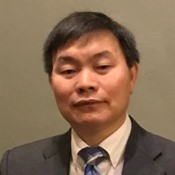Program Information
Common Treatment Related Issues and Solutions During Proton Therapy: Seven Years of Experience at a Proton Therapy Center
Y Zheng1*, S Rana2 , H Singh3 , T Twyford3 , L Zhao4 , J Gao5 , M Chacko3 , E Ramirez 6,(1) Atlantic Health System, Morristown, NJ, (2) Miami Cancer Institute , Miami, FL, (3) Procure Proton Therapy Center, Oklahoma City, OK, (4) St. Jude Children's Research Hospital, Memphis, TN, (5) Northeast Louisiana Cancer Institute, Monroe, LA, (6) FOUNTAIN VALLEY , CA
Presentations
SU-I-GPD-T-209 (Sunday, July 30, 2017) 3:00 PM - 6:00 PM Room: Exhibit Hall
Purpose: The complexity of proton machine and beam delivery technique often lead to issues during patient treatment. How to solve the issue promptly and make right decisions could be challenging due to issue complexity, time constraint, and lack of experience. The purpose of this study is to present common issues and the corresponding solutions based on over seven years of experience at a proton center.
Methods: Our center is comprised of a 230 MeV cyclotron, one fixed beam room, two inclined beam rooms, and one gantry room. Uniform scanning beams are used in all treatment rooms. Mosaiq (Elekta, Sweden) is employed for radiation treatment record and verification. The VeriSuite patient positioning and verification system (MedCom, Germany) was used for image viewing and registration. During patient block checks or treatments, the radiation therapist will call physicists when an issue related to setup or treatment occurs. The on call physicist will go to the treatment room, address the issue and follow up as necessary. The issue and its cause and solution will be recorded on an in-house spreadsheet, and periodically analyzed to facilitate physics training and clinical usage
Results: In total, we have recorded over 120 issues, which were sorted into 5 categories: Morning QA, patient setup, imaging guidance, beam delivery, and others. Common issues in each category were analyzed and the corresponding solutions were provided. The database has been used for new physicist training as well as a reference for physicists to search for solutions when an issue comes up.
Conclusion: Knowing common issues during proton therapy and how to address them allows physicists to provide appropriate and timely clinical support. To achieve this goal, it is important to have an ongoing database and process to accumulate issues and solutions and encourage knowledge sharing among physicists and facilities.
Contact Email:
